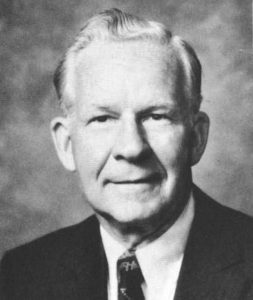Political ignorance is a topic I’ve been reading up on as of late. It’s a tad depressing, if not all that surprising. A brand new Brookings paper builds off this research to argue the following:
- Always empirically questionable at best, the populist-progressive idea that more participation will reliably improve either the products or the popularity of governance has taken a pounding in recent years, to the point where it is basically untenable. The populist model assumes that voters are better informed, more rational, and more engaged than is the case—or ever will be.
- Even implausibly well-informed and rational voters could not approach the level of knowledge and sophistication needed to make the kinds of decisions that routinely confront the government today. Professional and specialist decision making is essential, and those who demonize it as elitist or anti-democratic can offer no plausible alternative to it.
- Professional intermediaries make democracy more inclusive and more representative than direct participation can do by itself. In complex policy spaces, properly designed intermediary institutions can act more decisively and responsively on behalf of the public than an army of “the people” could do on its own behalf. Intermediated systems are also less likely to be paralyzed by factional disputes and distorted by special-interest manipulation than are systems designed to maximize voter participation and direct input.
- Nonetheless, the predominant ethos of the political-reform community remains committed to enhancing individual political participation. This is a costly oversight. Some populist reform ideas are better than others, but, as a class, they have eclipsed a more promising reform target: strengthening intermediating actors such as political professionals and party organizations.
They review the literature on political ignorance to reveal the following:
- Voters are very ignorant, and always have been.
- Voters are ignorant because they’re rational, not because they’re stupid.
- Voters are irrationally biased as well as rationally ignorant.
- Providing more education or information isn’t a solution (though it’s worth doing anyway).
- Even if voters were deeply informed and meticulously rational, elections still would not reliably tell us what the public thinks or wants.
What’s to be done? GMU law professor Ilya Somin suggests “foot voting“:
In many situations, the better approach to mitigating political ignorance is not to give up on empowering ordinary people, but to do so in a different way. Instead of putting our faith in political participation, we can instead give people more opportunities to “vote with their feet.”When people vote with their feet in the private sector, or by choosing which jurisdiction to live in within a federal system, they have much better incentives to acquire relevant information and use it wisely. Unlike ballot box voters, foot voters have the opportunity to make individually decisive choices that are likely to make a real difference. If you are like most people, you probably spent more time and effort acquiring information the last time you decided which TV or smartphone to buy than the last time you decided who to support for president or governor. That is likely because you knew that the decision about the smartphone would make a real difference, whereas the one about the presidency had only a miniscule chance of doing so.
We can enhance opportunities for foot voting by limiting government power and devolving it to lower levels. It is cheaper and easier to vote with your feet between states than between countries, and easier still to choose between localities or between competing alternatives in the private sector. There is also much that can be done to make foot voting easier for the poor and disadvantaged. Greater decentralization of power can also help mitigate the partisan bias and polarizatoin that both Rauch and I believe have exacerbated our political pathologies.
…I certainly do not claim that decentralization and foot voting can overcome all the dangers of political ignorance. Probably no one strategy can do that. But I think it can be be a bigger and less risky part of the solution than increasing the role of political professionals, even though there are indeed some situations where we should rely more on the latter. Be that as it may, Wittes and Rauch deserve credit for taking the problem of political ignorance seriously, and for their valuable contribution to the debate over this crucial issue.
Check both pieces out.



/cdn.vox-cdn.com/uploads/chorus_asset/file/8489057/1_s2.0_S0022103116304024_gr1.jpg)





